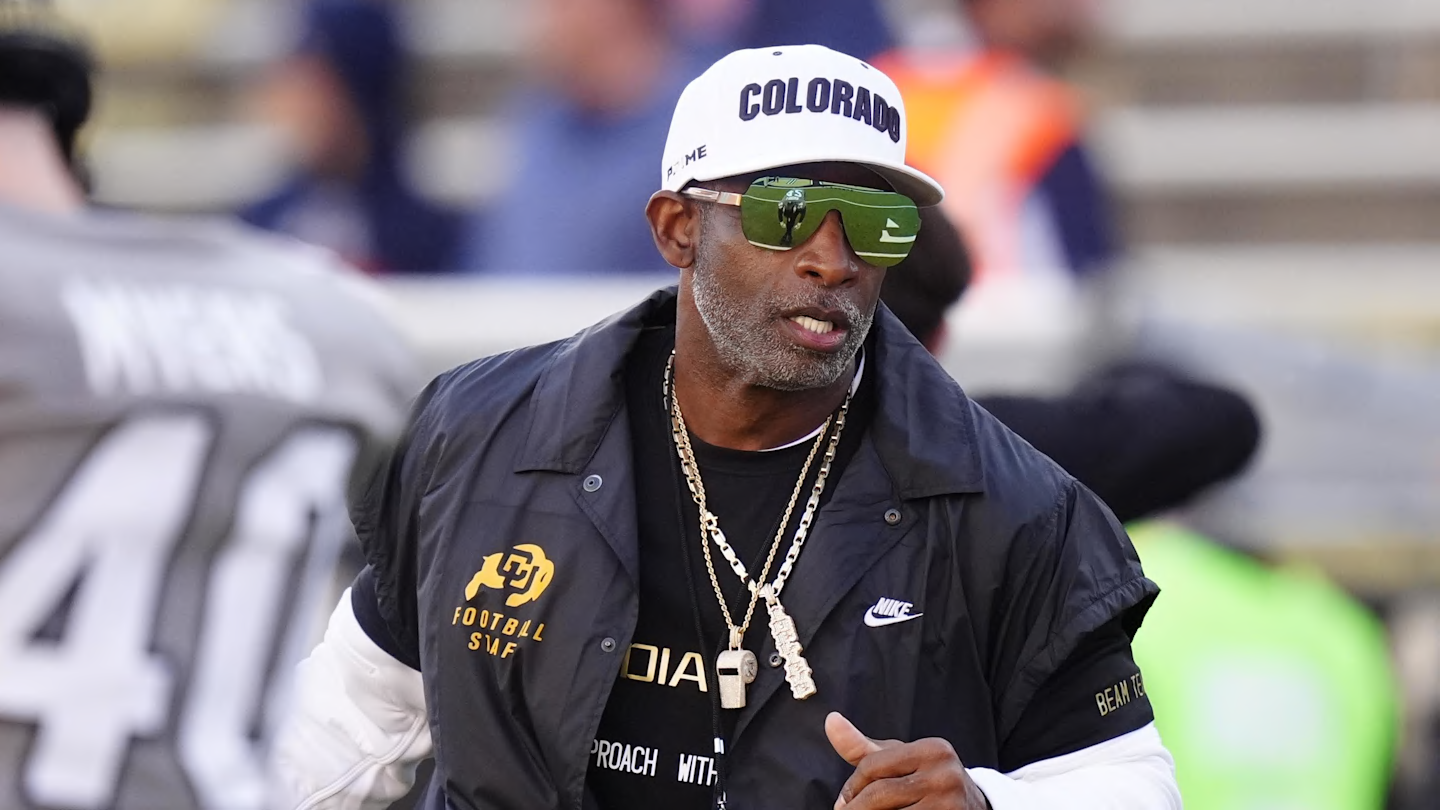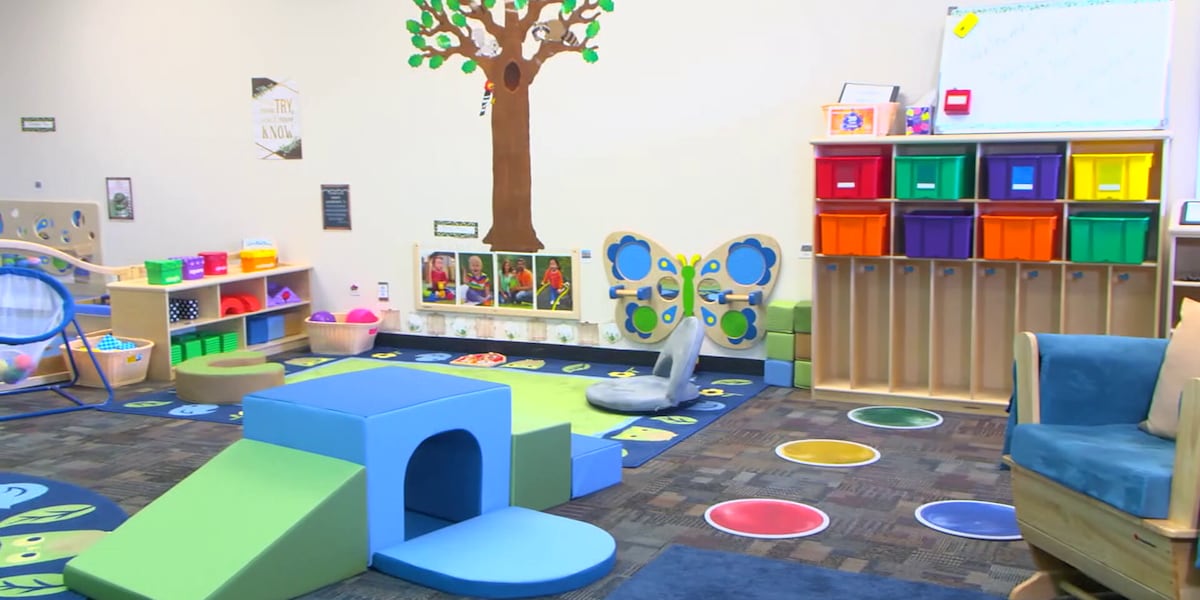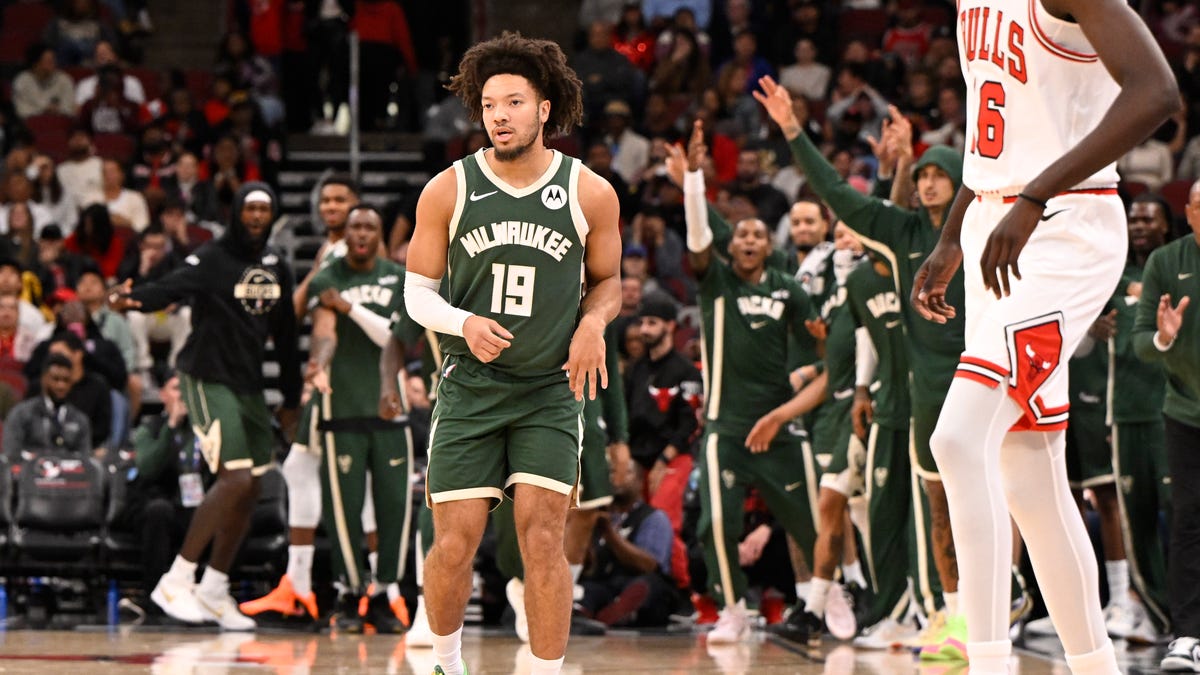Arizona
Dakota Kennedy, Aissa Silva lift No. 18 Arizona softball to season-ending win over GCU

The No. 18 Arizona Wildcats needed to have short memories. Just two days after a heartbreaking loss to UCLA they were facing a tough Grand Canyon team that came in with a 42-10 record and five wins over major conference teams, including then-No. 17 Virginia Tech. UA couldn’t afford to wallow in what could have been.
Looking back wouldn’t help with a tough team on the schedule for Arizona’s final game of the regular season. Staying in the moment against a strong GCU squad allowed the Wildcats to close the regular season on a high note with a 3-2 victory.
“Obviously we didn’t have the outcome that we wanted on Sunday, but that’s done and over with,” said sophomore outfielder Dakota Kennedy. “No dwelling on that anymore. We knew we’re coming to play GCU. We were focused on GCU and we did what we had to do.”
Kennedy certainly didn’t seem to have anything on her mind except for the task at hand. She immediately put the Wildcats up with a lead-off home run in the bottom of the first.
The left fielder was a major cog in Arizona’s offense all night with a 4-for-4 showing at the plate and two home runs. It was the fourth multi-homer game of her career and the second this season.
The Wildcats got another run in the first on a Blaise Biringer groundout that scored Regan Shockey. The 2-0 lead was slim, though.
GCU got its lead-off batter on base every inning until the sixth. The Antelopes finally broke through in the top of the third. Arizona reliever Brooke Mannon loaded the bases on a single, an error, and a walk.
That ended the day for Mannon, who wasn’t able to record an out. Aissa Silva entered the game with the bases loaded and no outs. She surrendered an inherited run on a sacrifice fly but limited the damage to keep the Wildcats in front 2-1 after three innings.
GCU continued to show why it’s given teams from the Pac-12, the ACC, and the Big Ten trouble.
Katelyn Dunckle led off the fourth and quickly leveled the game at 2-2 with a long ball to left-center.
Arizona responded in the bottom of the inning with Kennedy’s second home run. The solo homer put the Wildcats back up by one run, but it definitely wasn’t enough of a lead to make them feel comfortable.
Silva walked the first batter in the fifth, but a strikeout and a double play ended that threat. In the sixth, she sat the Lopes down in order for the first time. Then, came the seventh.
Silva hit Tinley Lucas to start the inning. Lovey Kepa’a singled to put two on with no outs. Ashley Trierweiler came up and tried to move the runners.
Trierweiler bunted into the air. It looked like Silva was undecided about whether to try to catch it in the air or let Carlie Scupin field it. In the end, no one got to it and the bases were loaded with no outs.
As a high schooler, Silva set strikeout records for her program. It was what she was known for. In college things are different, and Lowe often talks about how important it is to use your defense. Sometimes strikeouts are needed, though—and this was one of those times.
“I definitely don’t think of it as a different mindset,” Silva said. “I kind of just go out there and be aggressive every time. Definitely having a great defense helps behind me, so I know I can rely on them to not always have a strikeout, but having a strikeout is always a plus.”
Silva struck out Kayla Rodgers swinging for the first out. She struck out Kristin Fifield looking for the second out.
Ramsay Lopez was the next hitter to step into the box. She has 13 home runs this season and could put the Lopes up by three if she got it out of the park.
Lopez fouled off the first three pitches. Then, Silva threw two balls to even the count. A foul and another ball made it full. Even another ball would tie the game. After what happened on Sunday at UCLA, that could be devastating.
Silva dug deep and got Lopez to swing at the third strike and end the game. It was the sophomore lefty’s seventh strikeout of the game.
“That was super important to me,” Silva said. “I felt the need to be there for my team. And I like to make it a little difficult on myself and make it a little interesting. But at the end of the day, I knew I needed to come in for my team and it’s the same as when they come in for me to hit.”
Silva earned her 21st win by throwing five innings of four-hit, one-run ball. She had one walk and hit a batter to go with the seven strikeouts. Four of those strikeouts came with the bases loaded.
What’s the difference between when Silva pitched into the defense and when she went for the strikeout?
“I just think you’re reading hitters, too,” Arizona head coach Caitlin Lowe said. “There’s going to be certain hitters who are making adjustments, and you’re going to have to pitch into your defense and then there’s going to be some people where you find some holes and you can attack them. And I was most proud of her because she knew…what she wanted to throw in one of those last at-bats and went after it. And to me, that’s just intent. It’s not her stuff. It’s not anything else except for she’s playing good softball in the moment. And I was proud of that and her knowing what she wanted in that very moment.”
Miranda Stoddard started the game but did not figure in the decision. She gave up three hits and a walk but didn’t surrender any runs in two innings. Mannon gave up one run on a hit and a walk.
Arizona returned to its pattern of relieving pitchers fairly quickly. The pattern isn’t always popular with fans, but it has been successful most of the time this season.
On Sunday against UCLA the staff went away from that and kept Silva in the game after she ran into trouble. That wasn’t the case on Tuesday, as they pulled Stoddard despite giving up no runs and quickly lifted Mannon when she was struggling.
Lowe said that the feeling in the moment helps determine whether to keep a pitcher in the game.
“I thought they squared up Miranda kind of early and Brooke wasn’t able to find the zone tonight,” Lowe said. “I think she’ll rebound from this and do better, but at the same time, that’s a very good team and you can’t give them a lot of chances. So we wanted to get Aissa in the game. She was one of the better matchups for them anyway, we just wanted to make sure we weren’t throwing her the full seven.”
Arizona completed its Pac-12 schedule with the series at UCLA but awaits this weekend’s games to find out who it will play in the Pac-12 Tournament. The Wildcats will be either the four or the five seed and play Oregon or Washington in a game scheduled to begin at 6:30 p.m. MST/PDT on Thursday, May 9.
The winner will take on the No. 1 seed on Friday, May 10. That likely means a rematch with UCLA.
The long break before the conference tournament can be looked at as a positive or a negative. Lowe is choosing to look at the pluses.
“They need a break,” she said. “I mean, it’s tricky not having your bye weekend in the middle of conference because it is kind of nice to get a breather. So they need a day, day-and-a-half of just the game off their bodies and off their minds. I think that’s the biggest thing. And to step into practice fresh.”
The Wildcats finished the regular season with an overall record of 33-15-1. They are 13-11 in Pac-12 play.

Arizona
Biggest Winners, Losers from Colorado’s Embarrassing Loss To Arizona

The Colorado Buffaloes’ 52-17 loss to the Arizona Wildcats at Folsom Field on Saturday evening tells a story far louder than the final score.
The low attendance of 48,223 and the steady stream of students and fans leaving by the third quarter reflects a painful reality of Colorado coach Deion Sanders’ second consecutive blowout loss.
However, in the difficult quiet of the postgame, “Coach Prime” offered the answer the program needs right now in the form of accountability.
“It’s on me. Don’t attack the coordinators. Come at me. Don’t attack the players. Come at me. It has everything to do with me,” Coach Prime stated, also confirming that no players would be available to speak after the loss.
After cycling through fellow quarterbacks Kaidon Salter and Ryan Staub, the immediate future of the offense appears to be settled. The loudest cheers of the entire evening were reserved for true freshman Julian Lewis coming into the game.
Lewis rewarded that faith quickly, delivering the first passing touchdown of his young college career with a beautiful 59-yard strike to Omarion Miller. Lewis’ poise and impressive movement in the pocket, even as the game spiraled out of control, was encouraging.
Though Lewis finished the game with an injury (forcing Dominiq Ponder in), his performance earned him the keys to the offense moving forward.
Coach Prime noted that while he isn’t sure of Lewis’ exact thoughts on the four-game redshirt limit, he was “glad he got an opportunity.”
With Lewis now positioned as the primary starter, the decision, barring injury, likely closes the door on the Salter era.
The defense, which was scorched repeatedly by explosive plays to the tune of five touchdowns of 56 yards or more in the last six quarters, suffered a massive blow with the ejection of safety Tawfiq Byard for targeting with just over eight minutes remaining.
Byard, who has consistently been the Buffs’ best defensive player, will now be forced to sit out the first half of the critical road game at West Virginia. That loss of leadership and production will be felt next week.
Veteran quarterback Kaidon Salter struggled to generate offense all night, managing just 49 yards passing on 11-of-15 attempts before being benched late in the first half. He suffered a critical strip-sack that led directly to an Arizona touchdown, continuing the turnover trend.
Staub’s brief appearance in the third quarter was equally disastrous. He was benched after both of his passes were intercepted, with one being returned 59 yards to the Colorado 17-yard line. His lack of consistency compounded the mounting problems.
With the Buffs having cycled through three quarterbacks on the night and Lewis now having taken meaningful snaps, it appears to be Lewis’ time to lead.
MORE: Deion Sanders Didn’t Hold Back On College Football’s Firing Frenzy
MORE: Defensive Coach Rips Colorado Buffaloes’ ‘Embarrassing’ Loss To Utah
MORE: Is This The Beginning Of The End For Deion Sanders In Colorado?
In a game defined by turnovers and the defense struggling, wide receiver Omarion Miller was a consistent bright spot, as he accounted for both of Colorado’s touchdowns.
He first capped off the team’s longest drive of the season with an 8-yard touchdown strike from Salter. His second score was a beautiful, momentum-generating 59-yard touchdown catch from Lewis.
Miller proved he is a reliable and explosive target who can connect with any quarterback in the system and gives the Buffs a consistent threat to build around.
With the team falling to 3-6, the challenge of finding three wins in the final three games to secure bowl eligibility seems monumental.
However, Coach Prime’s immediate and unequivocal acceptance of responsibility sets a powerful tone. His decision is a clear statement that the failures start at the top.
The final three weeks are about bowl status and defining the culture of accountability and perseverance that Coach Prime has promised. The Buffaloes need to finish strong and show a resolve and fight that matches the faith their coach places in them.
Arizona
Arizona Head Start programs face uncertainty amid government shutdown

PHOENIX (AZFamily) — Around 17,000 children in Arizona are currently enrolled in Head Start programs. But funding uncertainty amid the ongoing government shutdown threatens to disrupt the help the program gives.
The 60-year-old federally funded program helps the youngest in a community by providing education, nutrition and family services to help set children up for success.
“I love watching when families and children enter our program,” said Keri Flathers, the child development manager at Educare Arizona. “It’s a concern on everyone’s minds.”
According to the National Head Start Association, 140 programs nationwide will lose their operational funding if the government shutdown continues into November, including about 210 kids and 37 staff in Arizona.
“For Head Start programs, the November 1st date has a significant impact. One, because there’s many grantees who are still waiting for their notice of award to continue providing services. But then we also serve families that are SNAP recipients,” said Eve Del Real, president of the Arizona Head Start Association.
Program grants are approved on a rolling basis, but the longer the government shutdown lasts, the greater the impact. Del Real says more than 2,200 kids could be impacted by December, depending on how the shutdown continues to play out.
“One of the biggest challenges that we have in projecting out how to prepare if a notice of award does get issued is the backlog of fiscal actions,” Del Real explained.
Without the Head Start program, Del Real said it could be devastating for families who rely on it.
“Families would have to rely then on unlicensed care or relying on family, friends, neighbors, to be able to compensate for the loss of this service,” she said.
See a spelling or grammatical error in our story? Please click here to report it.
Do you have a photo or video of a breaking news story? Send it to us here with a brief description.
Copyright 2025 KTVK/KPHO. All rights reserved.
Arizona
Arizona Cardinals injury report: Kyler Murray limited Thursday

Check out the Cardinals’ first injury report of Week 9.
The Arizona Cardinals opened their practice week on Thursday for Monday’s game against the Dallas Cowboys. Back from their bye, there was a short “bonus” practice Tuesday, but this is the first injury report of the week.
Back on the practice field were cornerback Garrett Williams, who is on injured reserve (IR), and outside linebacker BJ Ojulari, who is on reserve/physically unable to perform (PUP). Each began their 21-day practice windows this week with Williams on Tuesday and Ojulari Thursday.
Injured in training camp on Aug. 2, Ojulari revealed Thursday that he tore other ligaments in addition to the ACL and said the rehab has “been hell, for real.”
Defensive lineman Walter Nolen III, who is also on PUP, returned to practice prior to the Week 7 game against the Green Bay Packers.
The full details of the first injury report are below. Starters are noted with an asterisk.
Cardinals Thursday injury report: Did not participate
- T Kelvin Beachum (not injury related/rest)
Limited participation
- S Kitan Crawford (ankle)
- RB Emari Demercado (ankle)
- WR Zay Jones (knee)
- *QB Kyler Murray (foot)
- DL Walter Nolen III (calf/practicing while on reserve/PUP)
- LB BJ Ojulari (knee/practicing while on reserve/PUP)
- *CB Garrett Williams (knee/practicing while on IR)
When asked prior to Thursday’s practice what the “mile markers” are for Murray returning to play, head coach Jonathan Gannon said, “Get him fully healthy (to) play.” When asked if Murray is being prepared to start, Gannon said, “Yeah.”
Crawford and Demercado were inactive for the game against the Packers in Week 7.
Cowboys Thursday injury report
Did not participate
- S Alijah Clark (ribs)
- LB Jack Sanborn (groin)
- S Donovan Wilson (elbow/shoulder)
Limited participation
- T Ajani Cornelius (knee)
- LB DeMarvion Overshown (knee/practicing while on reserve/PUP)
- CB Shavon Revel Jr. (knee/practicing while on reserve/NFI)
- *LB Tyler Smith (knee)
- *S Juanyeh Thomas (migraine)
- DT Perrion Winfrey (back/practicing while on IR)
Full participation
- C Cooper Beebe (ankle/practicing while on IR)
- *DT Kenny Clark (elbow)
- DE Marshawn Kneeland (ankle)
- CB Reddy Steward (thigh)
Get more Cardinals and NFL coverage from Cards Wire’s Jess Root and others by listening to the latest on the Rise Up, See Red podcast. Subscribe on Spotify, YouTube or Apple podcasts.
-

 New York1 week ago
New York1 week agoVideo: How Mamdani Has Evolved in the Mayoral Race
-

 Milwaukee, WI5 days ago
Milwaukee, WI5 days agoLongtime anchor Shannon Sims is leaving Milwaukee’s WTMJ-TV (Channel 4)
-

 News5 days ago
News5 days agoWith food stamps set to dry up Nov. 1, SNAP recipients say they fear what’s next
-

 Alabama6 days ago
Alabama6 days agoHow did former Alabama basketball star Mark Sears do in NBA debut with Milwaukee Bucks?
-

 Politics1 week ago
Politics1 week agoGrassley releases memo showing DOJ ‘unleashed unchecked government power’ on Trump associates
-

 News1 week ago
News1 week agoMap: Minor Earthquake Strikes Southern California
-

 World1 week ago
World1 week agoTrump says all trade talks with Canada are terminated over Reagan ad
-

 News1 week ago
News1 week agoTrump backs away from sending federal agents to San Francisco | CBC News


















